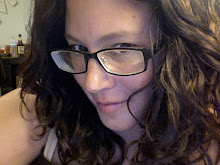

The other day, the magazine Humanities (the published arm of the NEH) ran an article that took a look at the ideas of Clement Greenberg (1909-1994) and Harold Rosenberg (1906-1978). Dubbing them the Ali and Frazier of the Abstract Expressionist era, the article cursorily sums up each man’s view. Though their arguments now have the dated tone of ideas whose time has come and gone, it is nonetheless instructive as we today still wrestle with the ideological leavings of the 40s-70s.
In fact, the author writes, “...American modern art reached its apex in the 1950s through the flowering of Abstract Expressionism, art criticism achieved a glittering purity of its own—a beautiful high criticism perfectly matched to the period of high art.” This discussion is timely: the Jewish Museum has mounted a show (underwritten by the NEH), Action/Abstraction, which mounts works by “rival godheads,” Jackson Pollock and Willem de Kooning, and fine works by (notably) Barnett Newman, Mark Rothko, and Clyfford Still, and later painters like Joan Mitchell, Helen Frankenthaler, and successors Jasper Johns, Frank Stella.
However, interspersed in the exhibit, writes Peter Schjeldahl, “abundant texts, photographs, and memorabilia. Film clips display the men’s differently impressive rhetorical panache: Greenberg is incisive and imperious, Rosenberg droll and oracular. (Parallel shots witness Pollock dripping and de Kooning stroking).”
In considering the show, one must cede the point that both Rosenberg and Greenberg were wonderfully logical writers, and highly influential thinkers. But now, we deal with their ideological detritus that asks writers to quantify, qualify and organize art...possibly/probably to our disadvantage.
As writers and essayists decry the obtuse and often seemingly nonsensical art writing of the present, we (as artists, writers, performers...) are left defending a position that though defensible, sometimes begs the question, why.
No, this is not a call for art and by extension art-writing to become incredibly accessible (art is elite, good art even more so), it is however, a call for truth in writing. Sometimes, a work is successful purely on its aesthetic merits...and that is enough. Placing artworks in a larger, social/political, cultural context is always instructive, but not always necessary.
That being said, it is worth noting that it took this writer 351 words to spit that idea out.
It is the ability to defend and explain that should be nurtured, not the need to endlessly do so. That way, when one is on a plane and forced into a conversation with a seatmate who argues the old trope "My kid could paint like Jackson Pollock," the line, "But little Sally didn't," can thrust home...leaving one in peace.
Pictured top: Greenberg, de Kooning, Rosenberg
Bottom: The Irascibles protest their exclusion from a New York exhibition in 1950. Back row: Willem de Kooning, Adolph Gottlieb, Ad Reinhardt, and Hedda Sterne; middle row: Richard Pousette-Dart, William Baziotes, Jackson Pollock, Clyfford Still, Robert Motherwell, and Bradley Walker Tomlin; front row: Theodoros Stamos, Jimmy Ernst, Barnett Newman, James Brooks, and Mark Rothko. —Photographed by Nina Leen, Getty Images

2 comments:
hey Mad,
I am sure you have read this, but just in case...
http://www.cis.vt.edu/modernworld/d/sontag.html
i reread it this summer and it really spoke to me.
sees ya!
thank you mark!
Post a Comment